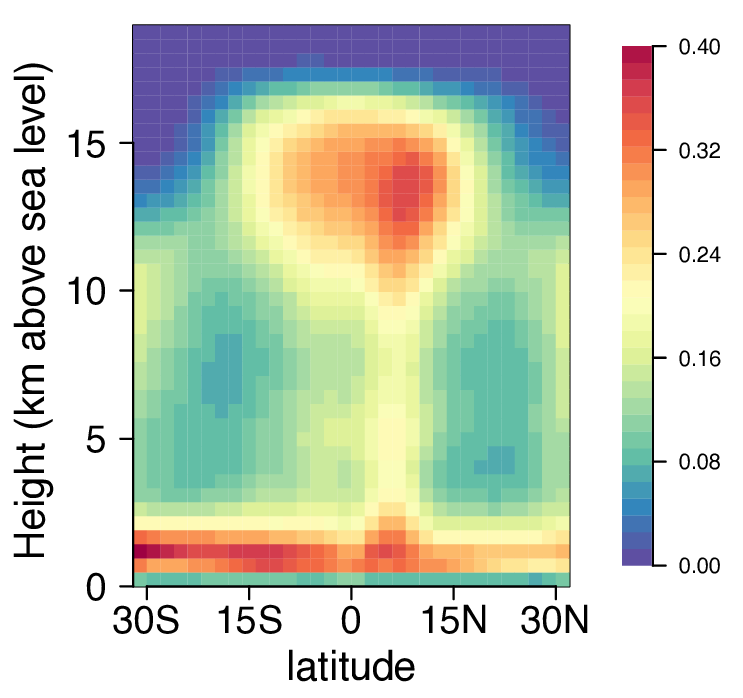Seeley, Jeevanjee, Langhans, and Romps, Formation of tropical anvil clouds by slow evaporation, GRL, 2019
Paper
Description
In the tropics, the upper troposphere is cloudier, on average, than either the middle or lower troposphere. Since those high clouds play a large role in Earth's radiation balance, and since their effect on anthropogenic global warming is uncertain, it is essential that we understand why they are there. The conventional paradigm for these clouds attributes their existence to the rapidly-declining convective mass flux below the tropopause, which implies a large source of detraining cloudy air there. But, is this right?
This paper tests this paradigm by manipulating the sources and sinks of cloudy air in cloud-resolving simulations. It is found that anvil clouds form because of the long lifetime of cloud condensates in the upper troposphere, not because of an enhanced source of cloudy air below the tropopause. The reason the cloud lifetimes are so long in the cold upper troposphere is because the saturation specific humidity is much smaller there than the typical condensed water loading of cloud updrafts, which causes evaporative cloud decay to act very slowly. Thus, the reason the tropical upper troposphere is so cloudy is not because clouds preferentially detrain there, but because the upper troposphere is so cold.
Cloud fraction from colocated spaceborne radar (CloudSat) and lidar (Cloud-Aerosol LIdar with Orthogonal Polarization; CALIOP) as described in Kay and Gettelman (2009) averaged over July 2006 to February 2011 and plotted as a function of latitude and altitude, zonally averaged.
